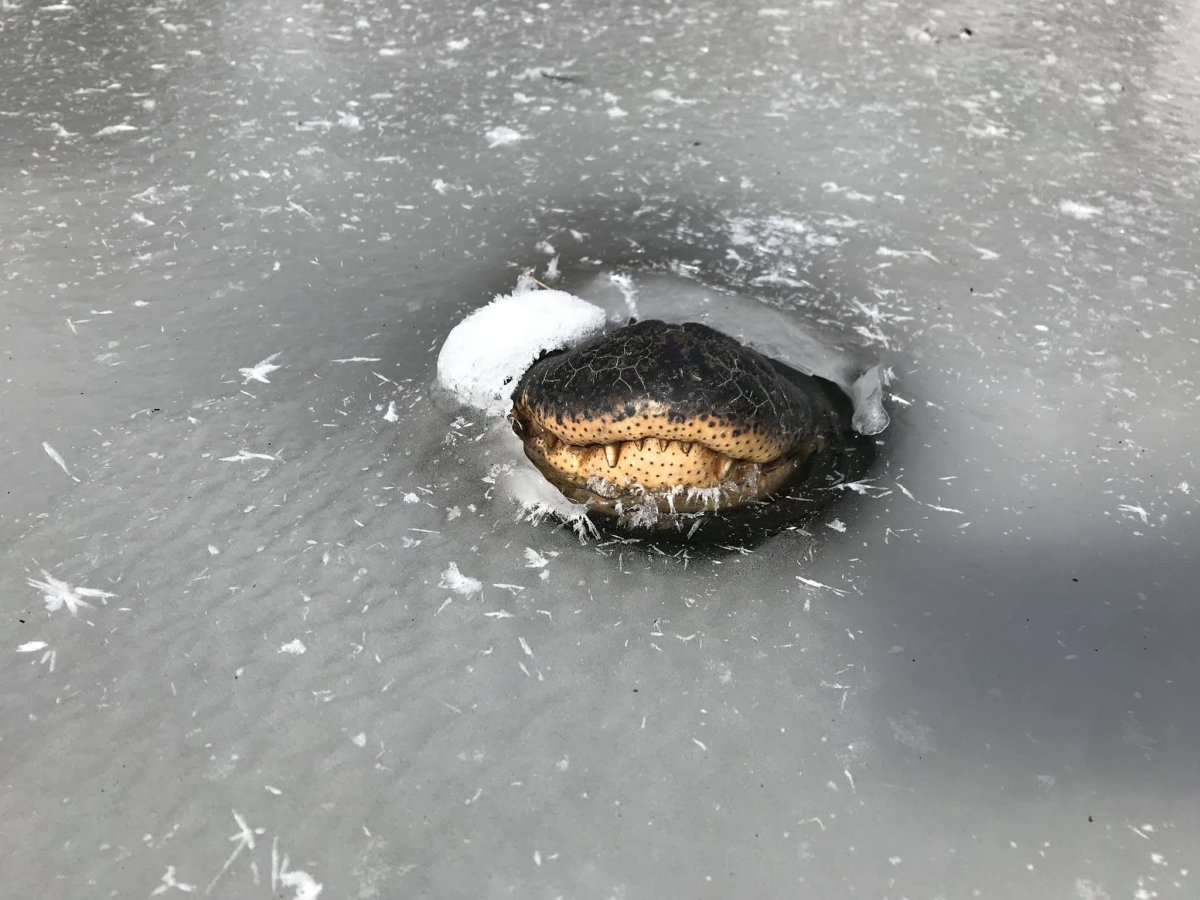If you're gazing at a frozen pond, a protruding alligator snout is not the first thing you would expect to find. But as the weather turns colder across the northern gator states, you may well stumble across one of these peculiar protrusions.
The central U.S. has been hit by a wild winter storm, and freezing weather is expected to continue over the Christmas weekend. And while many animals migrate south to wait out the colder months, others have developed strategies to withstand the snow and ice.
"Alligators deal with cold weather mainly through brumation, which is sort of the reptile version of hibernation," Adam Rosenblatt, an ecologist and alligator expert at the University of North Florida, told Newsweek. "Basically, during brumation alligators enter a period of dormancy where their metabolism is very low and they don't move around a lot."
Physiologically, brumating is not the same as hibernating, but they are both life-saving adaptations that allow animals to survive through the cold.
While most cold-blooded animals will slow their metabolisms during the winter months, some have evolved to stop them almost completely. "The wood frog...survives the winter by allowing its body to partially freeze," Rosenblatt said. "It's evolved the ability to restart its metabolism from near zero after a freeze event."
Often, alligators will retreat into underground dens that they have dug into the banks of streams and rivers to wait out the cold. "Cold-blooded animals have a lot of different strategies for surviving the winter, but most involve finding somewhere—underground, inside a tree, under leaf litter, etcetera—that allows them to stay warm enough to survive," Rosenblatt said.

Sometimes, however, the alligators will stay in the icy water. "Alligators poke their snouts above the ice so they can continue to breathe even when a pond freezes over," he said. "They can sense when ice is forming, and they position themselves so the ice forms around their snout."

In 2021, wildlife photographer David Arbour shared photos on Facebook of the frozen gators at the Red Slough Wildlife Management Area in Oklahoma.
In 2018, the same behavior was seen by alligators at the Shallotte River Swamp Park in North Carolina.
In essence, they use their snouts as scaly snorkels so that they can breathe while their bodies remain in the insulated water below. "The behavior is common in alligator populations that live in areas that experience freezing conditions," Rosenblatt said.
If you see one of these snorkeling snouts, the best thing is to leave it alone. Like most of us, gators can be a bit snappy when they first wake up.
Do you have an animal or nature story to share with Newsweek? Do you have a question about alligators? Let us know via nature@newsweek.com.
Uncommon Knowledge
Newsweek is committed to challenging conventional wisdom and finding connections in the search for common ground.
Newsweek is committed to challenging conventional wisdom and finding connections in the search for common ground.
About the writer
Pandora Dewan is a Senior Science Reporter at Newsweek based in London, UK. Her focus is reporting on science, health ... Read more





